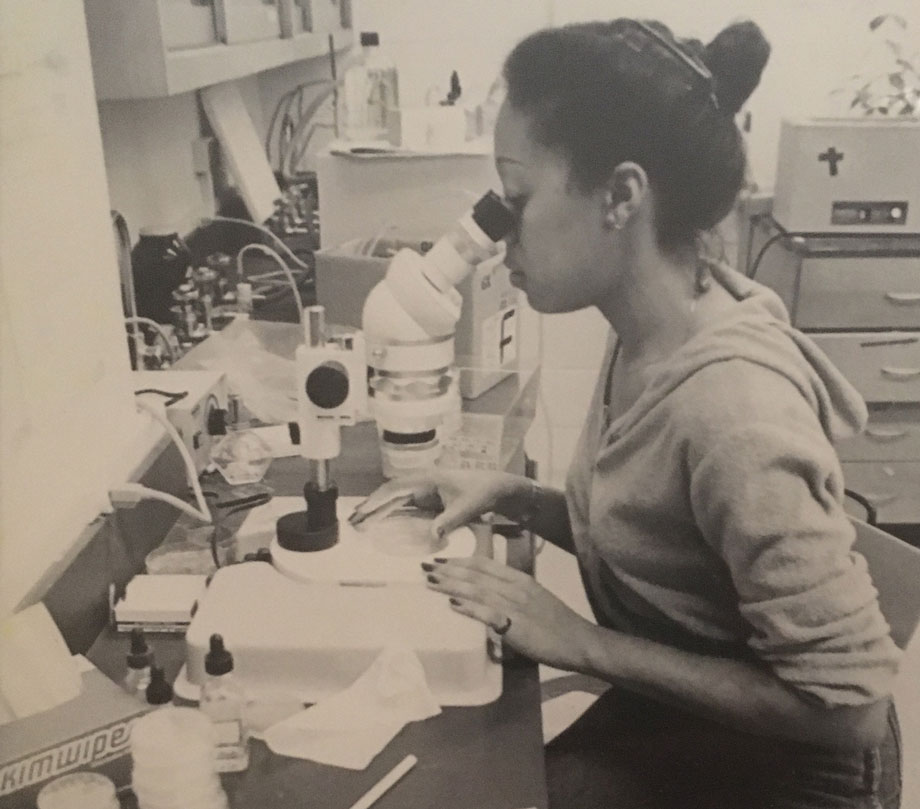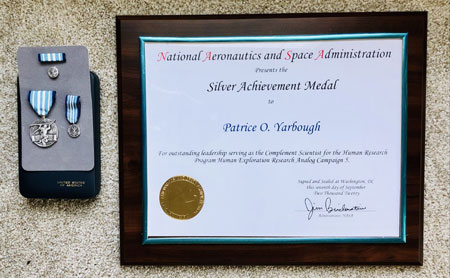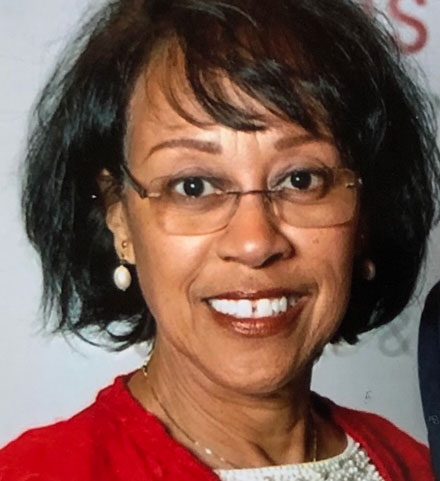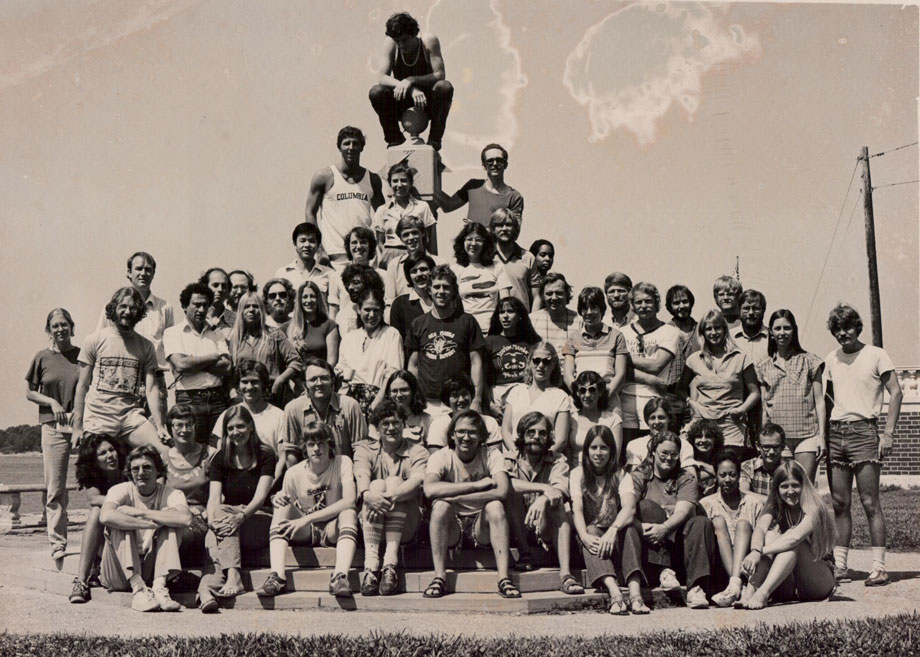"Take Five" with MBL Trustee Patrice Yarbough: From the MBL to NASA and Beyond

“Take Five” is an occasional feature in which we pose five questions to an MBL community member about their career, dreams, and passions. Here we profile Patrice O. Yarbough, senior scientist at KBR/NASA Johnson Space Center, 1980 alumna of the MBL Physiology course and, as of July 1, a new member of the MBL Board of Trustees.
Yarbough is the principal investigator for research projects in the Human Exploration Research Analog (HERA), an isolation habitat for simulated, long-duration space missions at Johnson Space Center. She received NASA’s 2020 Silver Achievement Medal for her outstanding leadership in the HERA program.
A Houston native, Yarbough received her bachelor’s degree in Biochemical and Biophysical Sciences and her PhD in Biochemistry at the University of Houston, and was an NIH postdoctoral fellow at the University of Texas Southwestern Medical Center at Dallas. Prior to contracting with NASA in 2008, Yarbough was director of Strategic Research Collaborations at the University of Texas Medical Branch, and a scientist and research director in the biotechnology industry. Through her leadership in several organizations, Yarbough is dedicated to helping women participate in science, technology, and mathematics at all stages of their careers.
When and why did you decide to become a scientist?
I decided in middle school that I wanted to be a scientist and I never deviated from that. My parents always said, “You’re going to have to work to take care of yourself, so why not find something you enjoy doing?” There were no scientists in my family or circle; growing up I didn’t personally know someone with the future job I wanted. But I was really good at math and knew that I wanted to attend college. I remember earning the 8th-grade math award. I went to an inner-city high school in Houston and the upper-level science courses were few, but I loaded up on them. In the 11th grade I successfully competed in a Westinghouse nationwide talent search for minority students who had a propensity for the sciences. That landed me four or five weeks at the University of Houston, and I literally fell in love with being in the laboratory. I studied halophytes and I had all sorts of stuff growing in my mom’s refrigerator; it was just a fascinating time for me. For college, I chose the University of Houston, where I very quickly zoned in on studying microorganisms. I was not very interested in plants and as my future graduate advisor, Ralph Hecht, once said to me, “You really don’t like studying anything that looks back at you.” And I was like, “No, I don’t!”
 Patrice Yarbough at the University of Houston in 1979, the year before she attended the MBL Physiology course. Photo courtesy of Patrice Yarbough
Patrice Yarbough at the University of Houston in 1979, the year before she attended the MBL Physiology course. Photo courtesy of Patrice YarboughWhat question most interests and inspires you to pursue your research?
It’s morphed over the 30 years I’ve been a professional scientist, but the common theme has been translational research. Every step along the way I was focused on, “What do you DO with the science? How do you take your basic research and move it into exploratory research, so that you can apply it to a current unmet need?”
After I finished my doctorate, I worked at a West Coast biotech company for 11 years as part of a molecular virology team. We were working on characterizing the hepatitis E virus, which had not yet been classified taxonomically. We wanted to understand how the virus was regulated so we could create a diagnostic and, ultimately, develop a vaccine for it. That was my driver: I wanted to be a part of the success of coming up with a preventative or therapeutic.
Currently at NASA in HERA, we are interested in the impact of confinement, isolation, and communication delays with Mission Control on the behavioral health of astronauts who are on long-duration missions. Our HERA research subjects are simulating a journey to Phobos, the moon of Mars, which would be a multi-year mission. After two weeks of training, they are in confined isolation inside of HERA for 45 days.
Our team includes a science team, a medical team, and an operations team to carry out a HERA campaign, which includes 4 missions and 16 human subjects. The clinical and behavioral psychologists are measuring indicators of stress, everything from changes in facial expression to changes in performance. Over the years we have included more physiological parameters to measure changes in the human response to stress. For example, if we can identify tangible biomarkers — some analytes in the blood that indicate response to stress — and we can compare those with clinical behavioral data, it will be a win-win. The ultimate goal is to be able to recognize the human response to stress early, and to develop countermeasures to manage the stress that you can send to the astronauts, or train them to use.
What I love about the studies is they also have general population applications. For example, everything we learn about confined isolation will have applications for the military, for understanding post-traumatic stress disorders in veterans. Right now, we are in the middle of a Covid-19 confinement and so many people are having difficulty managing it. So I feel confident that our research at NASA is a good use of taxpayers’ dollars, because it will have broad implications.
If you can invite three specialists in your field, living or deceased, to dinner, who would you choose?
The first person that comes to mind is Jonas Salk, an American born to an immigrant family. To have developed the polio vaccine in the early 1950s when so much of the technology that we have now didn’t exist … I would love to pick his brain about “How did you even think about asking that first research question?” It all starts with something that is a curiosity to you.
The second person is Russell Brown, an African American scientist at the Tuskegee Carver Institute in Alabama. When Salk had identified what he thought was the candidate polio vaccine, they were looking for a way to test its effectiveness and they needed human cells. Tuskegee had HeLa cells, the cancer cells taken from Henrietta Lacks at Johns Hopkins Hospital. A little-known story is that Russell Brown used those HeLa cells to show that the polio vaccine produced enough antibodies to fight off the virus. What really is amazing is how quickly Brown learned how to do tissue culture and how the Tuskegee scientists, led by Brown, grew a large quantity of HeLa cells to be distributed to medical laboratories around the country [to test batches of vaccine]. This was in the segregated 1950s, so it was quite difficult for this Black man to travel to the north for the tissue culture training. It’s not like Brown could just check into any hotel at that time. It was really rough. But he did it. It’s just an amazing story, one of so many examples of excellence in laboratory skills and willingness to work on behalf of science.
The third person is Kizzmekia (Kizzy) Corbett, an African American woman in her 30s who was on the National Institutes of Health team for the development of the early COVID vaccine. I would love to have breakfast, lunch, and dinner with her. I am sure that we have much in common, but her path had several educational options that weren’t there when I was going through the ranks about 30 years earlier. Her passion is the interface between virus research and public health measures to help the fight against infection and global illnesses. By the way, for every virus that has a name, there are legions that don’t yet. We have to figure out how to protect human health against those, too.
How did you hear about the MBL, and what impact has it had on your life or career?
The MBL has always been known as a gem of scientific excellence; people all over the world go there for its immersive research courses. So in my senior year when my advisor said, “You should apply for the Physiology course,” I did. I’m pretty sure the fact I had worked in the lab since my sophomore year helped me get in; most of the Physiology course students already had at least one year of graduate school. But I fit in just fine.
After the six-week course, I was accepted into a four-week post-course program where students did a mini project. The MBL was 10 glorious weeks for me. It was priceless. You meet students who have intellectual interests like yours and you walk away with that plus so much more. I had never worked that hard before; we literally worked in the lab around the clock. But there’s a little bit of magic in the air there, because everybody wants to do it. After I came home, all I could talk about was the MBL for months. MBL was the seal for me.
Years later, in 2018, I wrote a letter to the MBL saying I had not forgotten my amazing experience there and that I wanted to help send a minority student, preferably female and African American, to one of the prestigious summer courses. I was quite sad when I was told that no African Americans had been accepted to the Physiology course. I thought, “It’s been nearly 40 years since I was there and I was the only African American then. So what’s wrong here?” I was informed about the MBL SPINES course, a summer program in neuroscience for underrepresented minority students; I funded a student in that program.
And then last year I was called to discuss a position on the MBL Board of Trustees. What sold it for me was when the chair of the board, President Zimmer of University of Chicago, explained to me his vision of creating new programs for inner-city Chicago students. I thought “Between that and increasing the diversity of the students at the MBL, so more can have that amazing experience that I had in summer 1980, that’s going to keep me pretty busy as a Trustee.” So I accepted!
Outside of your work, what are your passions?
Number one is diversifying the science work force. Frankly, I’ve been doing that since I was a graduate student and I would reach back to the high schools, because I saw so few students in the natural sciences at the university that looked like me. Why aren’t they here? Some of it is because they simply don’t know about science and they maybe don’t know a scientist. When I went to private industry, I used my free time to reach out to the universities. Later, I chaired a women’s faculty organization at the University of Texas Medical Branch. The goal was to help women who choose academic science careers to stay in the field. I’ve been very involved in the Association for Women in Science since I was a graduate student. And I am looking forward to my appointment to the MBL Board of Trustees. This, too, will help me continue with something I started long ago: To bring more women and underrepresented minorities into science careers. And the best place in the world to work on that is at the MBL, the gem of scientific excellence in research and discovery.
Interview edited by Diana Kenney


